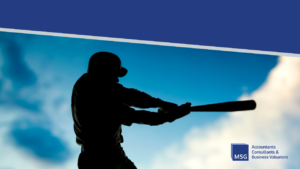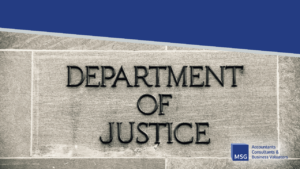You’re representing a client in a fraudulent transfer case, and opposing counsel starts throwing around terms like “insolvent” and “liquidity crisis.” Are they talking about the same thing? Should you be worried about both? Solvency and liquidity may sound like accounting jargon that means roughly the same thing, but confusing them in litigation can lead to costly consequences, so I wanted to break it down simply: Solvency addresses the big picture question: Can this company survive long-term? Do its assets actually outweigh its debts? Think of it as asking whether someone could theoretically pay off everything they owe if they had to liquidate, or the ability to pay both current and non-current liabilities. Liquidity is more immediate: Can this company pay its bills right now? It is the ability to meet just the current liabilities of the company. You might own a million-dollar building, but if you can’t make payroll next week, you have a liquidity problem. Consider solvency as the ability to fulfill long-term financial obligations, while liquidity looks at short-term commitments. I’ve worked on cases where a company looked solid on paper but couldn’t scrape together enough cash to keep operating. That distinction matters enormously in court. The Solvency Opinion Judges want more than assertions when financial health becomes central to litigation, whether in bankruptcy disputes, fraudulent conveyance claims, or contested transactions. They want a solvency opinion from a qualified expert. A proper solvency analysis requires three separate tests. A company must pass all three to be deemed […]
Blog
Category: Forensic Accounting
We have distilled decades of experience at the intersection of law, business and finance into a suite of articles to help our clients make sense of business valuation, forensic accounting, and litigation support. Please visit our site regularly for our latest content.
Pete Alonso’s New Contract: A Home Run or a Ground Out?
Posted in Forensic Accounting, on Feb 2025, By: Mark S. Gottlieb
Share
The Super Bowl is an annual event that both avid sports fans and the indifferent have come to enjoy. There seems to be something for everyone. Pomp and circumstance over the year’s two best football teams battling for the Lombardi Trophy, the halftime show, and the commercials. But for many like me, the crowning of football’s best means just one thing: pitchers and catchers are about to report for spring training. Experts are supposed to be unbiased and transparent. So, before you continue reading, let me come clean. I’m a big baseball fan who bleeds the Mets blue and orange. I am not a season ticket holder, but I watch nearly every game. My favorite summer moments are taking the 7 Train from Midtown to Flushing, buying a single ticket the day of the game, and sitting in the stands as close to the field as possible, with my tie loosely around my collar and suit jacket on my lap. Not since acquiring Mike Piazza has there been so much pre-season buzz about the Mets. Signing Juan Soto to a multi-year contract for a king’s ransom has certainly set great expectations. But the past few months after the Soto signing has been all about the Pete Alonso contract negotiations. Who didn’t want the Polar Bear back in a Mets uniform? He is just a stone’s throw away from passing Daryl Strawberry for the most home runs by a Met. And who can forget the winning homerun dumped over the right-field […]
Happy Thanksgiving To All, Especially To The Folks at Macy’s
Posted in Forensic Accounting, on Nov 2024, By: Mark S. Gottlieb
Share
Thanksgiving has always been one of my favorite holidays. Who doesn’t like spending time with family, eating, watching the Macy’s Day parade, and rooting for your favorite football team? I particularly remember one Thanksgiving when the kids were young, and we ventured into the city to watch the parade in person. It was a clear, cold, and windy day as we cautiously watched the floats march down Sixth Avenue. For many of us, the Macy’s Thanksgiving Day Parade is synonymous with the beginning of the holiday season. But this year, the wind surrounding Herald Square and the iconic retailer has nothing to do with the parade or the season of giving. Yesterday, Macy’s announced the delay in its quarterly earnings report due to fraud detected within its accounting system. What makes this event even more significant is that the fraud was perpetrated by an employee within the accounting department. Early reports have estimated the losses to be approximately $150 million over three years. Fraud represents a real and costly challenge for businesses. It undermines productivity and profitability while costing companies billions of dollars each year. Despite its prevalence, employee fraud often goes unnoticed, ignored, or undetected by business owners, auditors, and legal counsel. The motivations for fraud, whether committed by senior managers, middle-level employees, or other staff, frequently mirror those portrayed in fictional narratives we often see in our favorite television shows. Individuals may succumb to financial pressures fueled by greed, gambling debts, failed investments, or the strain of maintaining […]
Bennifer’s Pricey Parting: High-Net Worth Divorces Without Prenups
Posted in Divorce & Matrimony, on Aug 2024, By: Mark S. Gottlieb
Share
It’s 2024, and Bennifer is splitting up again, this time with real consequences. The divorce of Ben Affleck and Jennifer Lopez has sparked quite a conversation in our office this morning, and although I don’t plan on becoming a gossip columnist, I wanted to provide some healthy speculation based on my 35+ years as a financial expert, often retained for divorce cases. Understandably, there is nothing romantic about a prenup, but without one, all the earnings and assets made during their union may be considered community property. This situation highlights the importance of financial planning before marriage, especially for high-net-worth individuals. Despite their relatively short marriage, both Lopez and Affleck have been incredibly active professionally. Affleck has starred in two films and produced two others, while Lopez has starred in four films herself. Not to mention the $68 million mansion they purchased jointly—a 12-bedroom and 24-bath property that now becomes a significant asset to be divided. Before you ask, “Why wouldn’t they get a prenup?” or “Who the heck needs 24 bathrooms?” the real question should be: What’s two years of accrued assets for a couple with a mid-nine-figure net worth? Although Lopez is considered the “monied spouse” in this scenario, with such high individual net worths, it is unlikely that these divorce proceedings would lead to any “nickel-and-diming.” This is especially true considering that she filed for divorce “pro se” (or “pro per”), meaning that she chose to represent herself initially. Representing yourself as a pro se party in […]
The Ongoing Battle Against COVID Relief Fraud
Posted in Forensic Accounting, on Jun 2024, By: Mark S. Gottlieb
Share
A simple Google search for “PPP fraud” will bring you to hundreds of local news stories of recently indicted individuals and business owners alike defrauding the COVID-era Paycheck Protection Program. Nearly four years later, authorities have investigated 1,644 cases of tax and money laundering related to CARES Act fraud, with potential losses estimated at $8.9 billion. The Coronavirus Aid, Relief, and Economic Security (CARES) Act, signed into law on March 29, 2020, provided over $2 trillion in economic relief to help Americans navigate the financial challenges brought on by the COVID-19 pandemic. The CARES Act initially authorized up to $349 billion in forgivable loans to small businesses through the Paycheck Protection Program (PPP), with Congress later approving an additional $321 billion in PPP funding. In addition to the PPP, the CARES Act authorized various other relief programs, including the: Economic Injury Disaster Loan (EIDL) Economic Impact Payments (EIP) Provider Relief Fund (PRF) Pandemic Unemployment Assistance (PUA) Federal Pandemic Unemployment Compensation (FPUC) As the United States continues to grapple with the aftermath of the COVID-19 pandemic and its economic relief efforts, President Biden signed two bills into law that provide the Department of Justice and other federal agencies with more time to investigate and prosecute fraud charges related to these COVID-relief programs. These bills extend the statute of limitations for PPP and EIDL fraud charges to ten years. In the coming months, we may see the passing of the Fraud Prevention & Recovery Act, introduced by Senator Gary Peters (MI) in […]
The Hunt for Hidden Cash in Closely-Held Businesses
Posted in Business Valuation, on May 2024, By: Mark S. Gottlieb
Share
Discussing hidden cash and unreported income is always a popular topic for both commercial litigators and family law attorneys. Currently, we are working on several engagements that have developed into full-fledged forensic accounting and fraud investigations. Experts (as well as IRS investigators) look at key areas to prove that cash is missing and to estimate how much income the business owner may not be reporting. Hidden cash can be discovered by taking a closer look at: Bank deposits: These can be used to reconstruct income by analyzing the parties’ bank deposits, canceled checks, and currency transactions, accounting for cash payments made from undeposited currency receipts and non-income cash sources, such as loans, gifts, inheritances, or insurance proceeds. Sources and use of funds: Here, the business owner’s personal sources and uses of cash are analyzed to determine where the owner’s income and other funds came from and how they were eventually used. If the owner is spending more money than they are taking in, the excess may represent unreported income. Net worth: An unsubstantiated increase in a business owner’s net worth can reveal unreported income. Telltale documents such as bank and brokerage statements, real estate records, and loan or credit card applications are often used to define this increase. The net worth gain is calculated, reported income is subtracted, and the amount is further adjusted to reflect any nondeductible expenditures and non-income sources of funds. Percentage markup: Net income is often estimated by applying a benchmark profit percentage to sales or […]
Looking Out for Fraud: What Attorneys Need to Know
Posted in Forensic Accounting, on Oct 2023, By: Mark S. Gottlieb
Share
Occupational fraud continues to wreak havoc on businesses, with annual business losses reported to exceed $4.7 trillion worldwide. Fraud experts have long suggested that the presence of three conditions, known as the “fraud triangle,” greatly increases the likelihood that an organization will be defrauded. The classic fraud triangle, as conceived by criminologist Donald Cressey, consists of Pressure, Rationalization, and Opportunity. The Fraud Triangle, Cressey Pressure A perpetrator experiences some type of pressure that motivates fraud. Pressure can come from within the organization – for example, pressure to meet aggressive earnings or revenue growth targets. Alternatively, the pressure could be personal, such as the need to maintain a high standard of living, pay off debt, medical bills, or gambling. Rationalization Perpetrators often mentally justify their fraudulent conduct. They might tell themselves that they’ll pay back the money before anyone misses it, or reason that: They’re underpaid and deserve the stolen funds, Their employers can afford the financial loss, They’ll lose everything (or someone) if they don’t commit fraud, “Everybody” does it, or No other solution or help is available for their problems. Most employees who commit fraud are first-time offenders who don’t view themselves as criminals, but as honest people caught up by circumstances beyond their control. By rationalizing, perpetrators overcome ethical barriers that generally guide their conduct. Opportunity Without opportunity, even motivated and rationalized perpetrators can’t commit fraud. Occupational thieves exploit perceived opportunities that they believe will allow them to go undetected. Weak internal controls, oversight, and auditing create opportunities […]
Analytical Tools For Attorneys
Posted in Business Valuation, on Sep 2020, By: Mark S. Gottlieb
ShareFor those of you familiar with our valuation and forensic reports, you know first-hand that we use various tools to analyze and illustrate the financial capacity of a subject company. To examine financial characteristics, we often compare the subjects’ financial ratios to their peer group. For example, the subject company may report travel and entertainment expenses as 5.0% of annual sales. If the subject company reports T&E at 15.0% of sales, further investigation may indicate that this category contains excess owners’ perquisites. To illustrate these and other financial trends, we use charts and other demonstratives. One of my favorite analytical tools is a SWOT analysis. SWOT is an acronym that stands for strengths, weaknesses, opportunities, and threats. Strengths and weaknesses generally refer to: • Financial resources (funding, sources of income, and investment opportunities) • Physical resources (location, facilities, and equipment) • Human resources (employees, volunteers, and target audiences) • Access to natural resources, trademarks, patents, and copyrights, and • Current processes (employee programs, department hierarchies, and software systems) While opportunities and threats consider: • Market trends (new products, technology advancements, and shifts in audience needs) • Economic trends (local, national, and international financial trends) • Funding (donations, legislature, and other sources) • Demographics • Relationships with suppliers and partners • Political, environmental, and economic regulation We commonly illustrate the SWOT analysis in chart form, which draws the reader’s attention to those areas of greatest significance. Another tool we frequently use is Michael Porter’s Five Forces theory. For those of […]
Did Shake Shack Commit Fraud When They Applied For PPP?
Posted in Financial Advisory, on Apr 2020, By: Mark S. Gottlieb
ShareMany law firms and their clients have applied for the available federal and local loan and grant programs. Despite the promise for quick financial assistance, many businesses (including law firms) still face financial difficulties due to the Coronavirus Pandemic. The Payroll Protection Program (“PPP”) was established to provide immediate financial assistance to businesses that employ five hundred employees or less. The money set aside for the PPP was entirely distributed within days after the application process began. We are now hoping that the government replenishes the program. As it turned out, a significant amount of this money was disbursed to businesses that technically meet the SBA’s criteria, but are actually much larger companies, which are not intended to benefit from this stimulus package. Companies, such as Shake Shack, are returning the $10 million it received in the hopes that the money will be redistributed. Shake Shack is not the only large company to have benefited from having the infrastructure to quickly get ahead of the line for this money earmarked for small businesses. The realization that our economy’s financial weaknesses are now being exposed. Despite the prior peaks in the stock market, it is now clear that the adage: “What’s good for General Motors is good for America,” is just not true. Despite the current financial assistance being offered, tens of millions of workers are now unemployed, and many businesses are not expected to withstand the financial pressures caused by the current business interruption. Individuals and business owners are […]
Filing a Business Interruption Claim Following the Coronavirus
Posted in Economic Damages, on Mar 2020, By: Mark S. Gottlieb
ShareLike you, I woke up today to numerous news programs discussing the coronavirus. Aside from the health concerns, it has become apparent that businesses, large and small, national and local, are being affected. Some have stated that this week’s events have the potential to be the most catastrophic economic challenge in generations. With no immediate correction anticipated, business owners may be considering filing a business interruption claim. Business interruption insurance can provide much-needed assistance when disaster strikes. But filing a claim requires detailed analysis and documentation to allow the business owner to focus on recovery efforts. What’s covered? Most business interruption policies require the insured to file a detailed “proof of loss” within a short period (30 days, for example) after a loss occurs. But before estimating losses, it’s critical to review the scope of coverage. Policies typically reimburse the insured for lost business income (profits) during the loss period. Some also offer more extensive coverage. Here are just a few examples. Extraordinary expenses. Some policies will reimburse the insured for repairing damaged inventory and equipment, as well as the cost of operating the business at a temporary location until the original location is restored. “Denial of access” losses. This can occur when a natural disaster or other incident causes governmental authorities to block access to a company’s property for security reasons, even if the property isn’t damaged. Rebuilding costs. Depending on the policy language, some courts have found that the insured should be reimbursed for the extra cost […]


